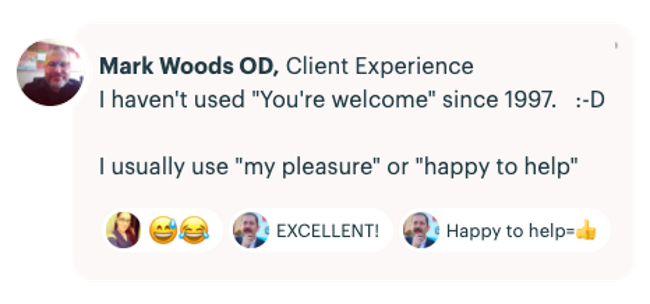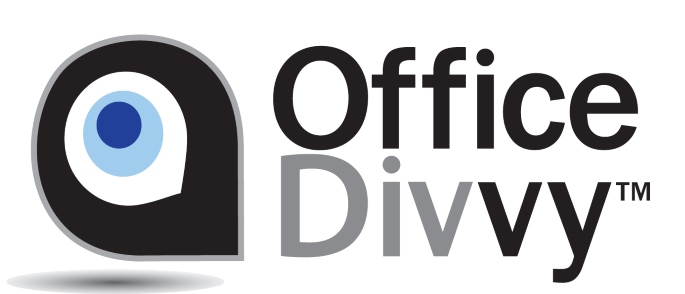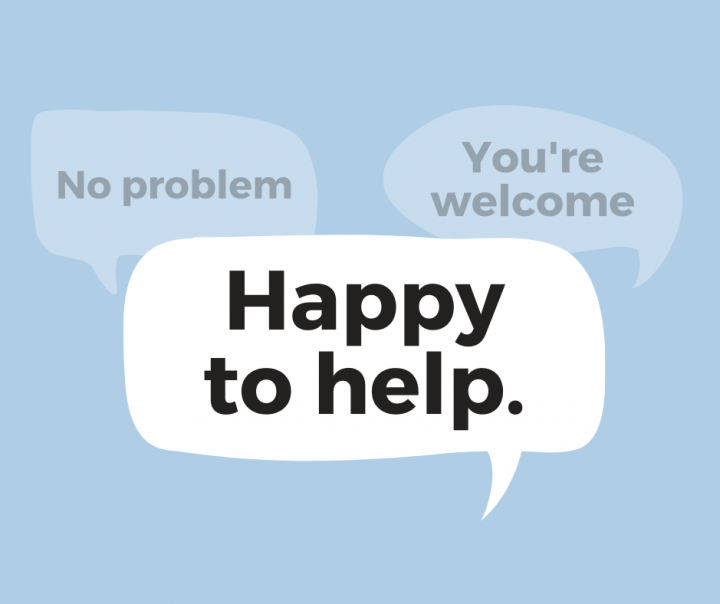How to Respond to “Thank you” in Business
Let’s admit: We all walk around with ready-to-go formulas in our heads to communicate with others.
We learn this because we need openers and closers for conversations, acknowledgments that events have occurred, and reflexive formalities to keep communication moving.
Back in 1993, when I first arrived in the United States, I got settled in Massachusetts. I found the people super friendly. I walked to my grad-school every day and during my walk I encountered at least a dozen people asking me how I was.
They’d say “how you doin’?” …and I thought they were initiating conversation.
I’d stop walking, smile back, answer the question and also inquire how they were: “I’m doing well, how are you today?”
As you can predict, as I answered their question I watched the same friendly person walk away briskly without pause.
This was really puzzling.
Are these people friendly, or are they not friendly? What’s going on here?
A few days into this dynamic, I realized that their version of “how are you” was not a question–it was a greeting! Duh! It was equivalent to a standard “good morning” or “good day,” and is the verbal version of a smile, wave, or head-bow. And all it required was an automatic response.
So I learned fast enough to respond to a stranger’s “how are you doing” with the same “how you doin’,” or “hi,” “good morning,” “good evening,” etc.
There are dozens of situations in our daily interactions with others that trigger these commonly accepted auto-responses.
And one of those is how to acknowledge someone who is thanking you.
How to respond to “thank you” is a very common, frequent and big one, is it not?
It is perfectly okay to have an automatic-response to “thank you” in most situations. However, in a business setting, especially in a customer-service dynamic, I believe intentional behaviors should replace these reflexive formulas we use to communicate.
When someone says “thank you,” it may come easy to respond with a “sure thing,” a “no problem,” or the most common, a “you’re welcome.”
Although these responses are not impolite, they may be too casual or perceived as problematic.
Speaking of problematic, let’s take “no problem” for instance.
Among the Gen Y and Gen Z demographic, “no problem” is becoming an automatic response to “thank you.” The response often underlyingly suggests the existence of a problem that wasn’t even there to begin with.
Alva Noë in NPR article, “A Case Against the Phrase ‘No Problem'” says:
Saying “no problem” in place of “you’re welcome” always strikes me as self-defeating. I thank you for your service, or your gesture, or your generosity, or your kindness. So why are you even mentioning problems?
“Negatively constructed responses” similar to “no problem” aren’t new. Merriam Webster article, “What the Problem with ‘No Problem’?” dates “don’t mention it” to 1777 and “not at all” to 1861.
Regardless, when one wants to project intentionality and care, “no problem” should be avoided because it should never be suggested that there might be a problem at all.
Here, in this video, you’ll find author, TV executive, and radio personality Bill Flanagan explaining why he takes exception to “no problem” in a 2013 edition of CBS Sunday Morning episode:
Mr. Flanagan suggests giving up “no problem” as a response to “thank you,” but he sees no fault with “you’re welcome.”
However, there are also several issues with “you’re welcome” when used in business and customer-service contexts.
To certain audiences, the phrase might signify your over-expectation of a “thank you”–it’s as if you’re telling them they did the right thing by thanking you.
It may hold a slightly gloating connotation or feel less humble.
In The New York Times article, “When Did ‘You’re Welcome’ Become a Gloat?” Amanda Hess explains that “you’re welcome” took up its new function as an expression of rudeness at just the moment when the phrase lost its usefulness as a nicety.
While a fully negative interpretation of “you’re welcome” is only possible through outwardly negative non-verbal cues like body language and tone, it is best to be safe and avoid the phrase entirely.
To honor the gratitude of a customer, client, or even a colleague without any of the baggage, we have to formulate more genuine or authentic responses to “thank you.”
This was the subject of a recent internal team-discussion here at Office Divvy when I noticed one team member was always responding to a thank you with a “you’re welcome,” and another with a “no problem.”
I created a discussion in our internal tools, and suggested the team use “my pleasure” as a more intentional and authentic response to “thank you.”
People chimed in, internalized what was being said and understood how that is a more elevated response compared to the alternatives.
One of our team members, Mark Woods included “happy to help” as another equally valid and valuable response.

We all agreed: “My pleasure” and “happy to help” both indicate you only did your job and you were happy to do so.
Letting someone know that you understand their appreciation is incredibly important in a business relationship.
“My pleasure” and “happy to help” both let the other party know that your responses aren’t constructed from traditionally ready-to-go formulas. Instead, your words are intentional, sincere, and authentic. This type of communication elevates the customer’s experience and their perception of the company.
Words have an impact and that shouldn’t be left unconsidered. Graciously receiving thanks is respectful of another person’s effort and means you’re committed to the interaction until the end.
Every aspect of customer service interactions both in-person and on the phone should always be on the table. Yes, this includes even the most basic interactions, including the ways in which we greet, respond to “thank you,” and wrap up an interaction.
So if you want to create successful relationships with your customers and clients, make sure to choose your words thoughtfully, allow your team to provide their personal input throughout the process of unifying responses to commonly encountered situations, and ensure your team is aligned on the adoption of your common language.
____________________
Acknowledgments: Thanks to Gabriel Schaffner for taking the lead and getting us started and assisting me with this blog post.

- On Great Resignation, Upskilling, Reskilling, Student Debt, and Formal Education - March 12, 2022
- Hybrid work, you are not behind. You may even be ahead. - December 29, 2021
- 10 Things Any Small Business Owner Can Draw from Harry Potter - July 11, 2021











